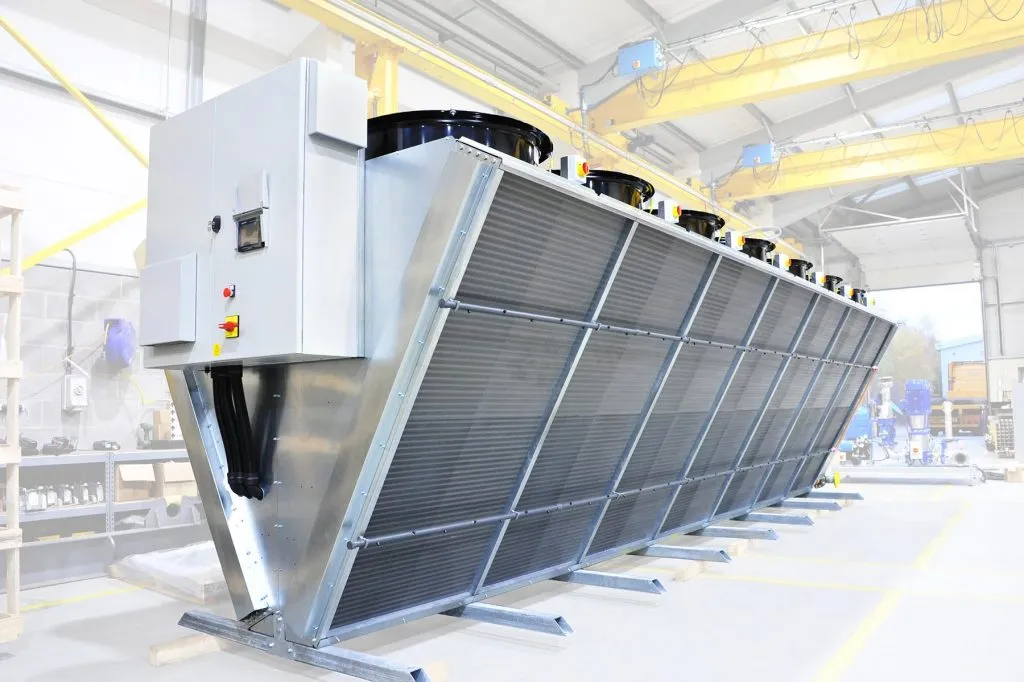As industries, data centers, and commercial buildings face increasing
pressure to reduce energy consumption and environmental impact, adiabatic
coolers have emerged as a game-changing solution. These innovative
systems combine the best of dry cooling and evaporative techniques, delivering
high-performance results with significantly lower water and energy usage.
The global adiabatic coolers market was valued at US$
515.8 Mn in 2022. It is projected to expand at a strong CAGR
of 7.1% from 2023 to 2031 and reach a valuation of US$ 946.1
Mn by the end of 2031. This impressive growth trajectory reflects a
global pivot toward energy-efficient, cost-effective, and sustainable cooling
systems across key industrial and commercial sectors.
Why Adiabatic Coolers Are Redefining the Cooling Landscape
At a time when traditional cooling systems are being scrutinized for
excessive energy and water usage, adiabatic coolers are setting new benchmarks.
By leveraging evaporative cooling during peak heat periods and switching to dry
cooling when ambient conditions are favorable, these hybrid systems provide
optimized performance year-round.
They require significantly less water than conventional evaporative systems
and consume less power compared to chillers — making them ideal for industries
and facilities aiming to cut operational costs and carbon footprints.
Key Drivers Fueling Market Growth
🌍 Global Push for Sustainability
Governments and businesses alike are adopting green building codes and
energy-efficiency policies. This regulatory environment is nudging industries
toward sustainable alternatives, and adiabatic coolers are rising as a
preferred solution.
💧 Water Scarcity Concerns
In regions with limited water availability, such as the Middle East, parts
of Africa, and drought-prone zones globally, traditional cooling towers are
becoming less viable. Adiabatic coolers offer an ideal alternative with minimal
water usage and lower operational risk.
⚡ Rising Energy Prices and Consumption
As electricity costs soar, industries are seeking alternatives that reduce
their dependence on energy-intensive HVAC systems. Adiabatic coolers offer up
to 80% energy savings compared to traditional systems in certain conditions.
🏢 Expanding Data Center Industry
Data centers are one of the most power-hungry industries in the world.
Efficient thermal management is critical to their operation. Adiabatic coolers,
with their low energy footprint and high cooling efficiency, are gaining
significant traction in this space.
Market Segmentation Highlights
✅ By Type: Dry Coolers Dominate
Dry adiabatic coolers are witnessing increased adoption due to their low
operational costs and eco-friendliness. Their hybrid operation — switching
between dry and adiabatic modes — makes them suitable for varying climates and
application needs.
✅ By Application: Industrial Sector Leads
Industries such as power generation, metallurgy, food processing, and
plastics manufacturing are increasingly adopting adiabatic cooling solutions to
enhance operational efficiency and meet emission norms. The commercial segment,
including hospitals, offices, and malls, is also picking up pace, especially in
urban heat islands.
Regional Outlook: Where’s the Demand Surging?
·
Europe leads the global market,
thanks to stringent energy regulations, widespread adoption of green
infrastructure, and a focus on reducing water consumption in industrial
processes.
·
North America is a major market
due to the growing demand from data centers, power plants, and manufacturing
hubs in the U.S. and Canada.
·
Asia Pacific is emerging as a
fast-growing region, fueled by rapid industrialization in China, India, and
Southeast Asia. Investments in infrastructure and urbanization are further
boosting demand.
·
Middle East & Africa are
seeing rising adoption due to water scarcity and the need for efficient cooling
in extreme climates.
·
Latin America is steadily
embracing adiabatic coolers, particularly in the food & beverage and energy
sectors.
Opportunities & Challenges
🌟 Emerging Opportunities
·
Integration with Smart Systems:
The adoption of IoT-enabled cooling systems is opening doors for remote
diagnostics, predictive maintenance, and real-time performance tracking.
·
Growing Demand from Data Centers:
As cloud computing, AI, and 5G technologies proliferate, the need for scalable
and energy-efficient cooling is creating high-value growth avenues.
·
Rise in Modular Construction:
Prefabricated and modular buildings often require compact, efficient, and
easy-to-integrate cooling systems — a role adiabatic coolers are well-suited
for.
⚠️ Key Challenges
·
Higher Upfront Costs: Although
operationally efficient, adiabatic cooling systems can be more expensive
initially compared to traditional cooling methods.
·
Maintenance Requirements: These
systems require periodic inspection to avoid scale formation, microbial growth,
and component wear, particularly in high-dust or hard-water environments.
·
Awareness and Adoption Gap: In
many emerging markets, lack of awareness about the benefits and applications of
adiabatic cooling systems can hinder widespread adoption.
Competitive Landscape: Technology and Sustainability at the Core
The global adiabatic coolers market is becoming increasingly competitive as
both established players and new entrants focus on product innovation.
Companies are differentiating themselves through:
·
Enhanced energy efficiency
·
Eco-friendly design with low water usage
·
Smart control systems
·
Customizable and modular configurations
Collaborations with energy service providers, data center contractors, and
green building consultants are also helping manufacturers expand their reach
and secure long-term contracts.
What’s Next for the Adiabatic Coolers Market?
Looking ahead, the market is likely to be shaped by:
·
Continued innovation in hybrid
cooling technologies that adapt to changing climate conditions
·
Increased government incentives
for sustainable infrastructure development
·
Expansion in water-scarce and
energy-intensive industries
·
Wider adoption of automation and AI
for smart cooling performance
With a projected market size of US$ 946.1 Mn by 2031,
adiabatic coolers are not just part of the future — they are the
future for industries aiming to operate efficiently, economically, and
responsibly.
📌 Looking to embrace sustainable
cooling for your facility?
👉 Request
your sample report today
Conclusion
The adiabatic coolers market stands at the intersection of energy
efficiency, climate responsibility, and industrial performance. With increasing
global emphasis on reducing environmental impact without compromising on
output, these cooling systems offer the perfect blend of innovation and
practicality. Businesses that adopt adiabatic cooling solutions today are not
just preparing for operational excellence — they are investing in a cooler,
cleaner, and more sustainable tomorrow.

No comments:
Post a Comment